Volume 4, Issue 1
Displaying 1-10 of 10 articles from this issue
- |<
- <
- 1
- >
- >|
-
1995 Volume 4 Issue 1 Pages 1-17
Published: April 25, 1995
Released on J-STAGE: March 02, 2011
Download PDF (5168K) -
1995 Volume 4 Issue 1 Pages 18-20
Published: April 25, 1995
Released on J-STAGE: March 02, 2011
Download PDF (828K) -
1995 Volume 4 Issue 1 Pages 21-29
Published: April 25, 1995
Released on J-STAGE: March 02, 2011
Download PDF (2607K) -
1995 Volume 4 Issue 1 Pages 31-36
Published: April 25, 1995
Released on J-STAGE: March 02, 2011
Download PDF (639K) -
1995 Volume 4 Issue 1 Pages 37-42
Published: April 25, 1995
Released on J-STAGE: March 02, 2011
Download PDF (662K) -
1995 Volume 4 Issue 1 Pages 43-48
Published: April 25, 1995
Released on J-STAGE: March 02, 2011
Download PDF (674K) -
1995 Volume 4 Issue 1 Pages 49-57
Published: April 25, 1995
Released on J-STAGE: March 02, 2011
Download PDF (900K) -
1995 Volume 4 Issue 1 Pages 58-66
Published: April 25, 1995
Released on J-STAGE: March 02, 2011
Download PDF (1636K) -
1995 Volume 4 Issue 1 Pages 67-72
Published: April 25, 1995
Released on J-STAGE: March 02, 2011
Download PDF (574K) -
1995 Volume 4 Issue 1 Pages 73-79
Published: April 25, 1995
Released on J-STAGE: March 02, 2011
Download PDF (1119K)
- |<
- <
- 1
- >
- >|
